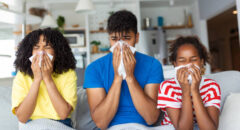
In the ever-evolving saga of the COVID-19 pandemic, a new player has taken center stage – the BA.2.86 variant. Recent government data has illuminated a concerning trend: the prevalence of this highly mutated variant has tripled in just two weeks. Now, nearly 1 in 10 new COVID cases in the United States can be traced back to BA.2.86, according to the U.S. Centers for Disease Control and Prevention (CDC).
As this variant tightens its grip on the nation, particularly flourishing in the Northeast, questions and concerns abound. What distinguishes BA.2.86 from its predecessors? How reliable are the current estimates? Is it more severe, and does it pose a heightened public health risk?
As the BA.2.86 variant of COVID-19 gains prominence, it’s crucial to stay informed and take necessary precautions. Here’s a comprehensive guide to help you navigate the latest developments:
1. Prevalence and Spread
Tripled Cases: Recent government data indicates that the prevalence of the BA.2.86 variant has tripled in the past two weeks.
Northeastern Hotspot: The Northeast, particularly the New York and New Jersey region, is experiencing the fastest spread, with over 13 percent of cases attributed to BA.2.86.
2. Background and Origin
Early Warning: Scientists initially warned of the highly mutated variant in August, and it has since spread across various regions in the United States.
Previous Dominance: The XBB variant and its descendants, like HV.1 and EG.5, have been predominant, but BA.2.86 is gaining ground.
3. CDC Estimates and Caution
Wide Margins of Error: CDC estimates on BA.2.86’s prevalence come with wide margins of error, but the latest estimate is three times higher than on November 11.
Caution on Early Projections: Early projections are less reliable, and the CDC highlights the dependence on a smaller number of sequences for analysis.
RELATED: COVID is Back: 6 Practical Ways to Boost Your Immune System
4. Severity and Public Health Risk
Similar Severity: Preliminary data suggests that BA.2.86 does not cause more severe illness than previous variants.
Low Public Health Risk: The CDC has categorized the BA.2.86 variant as posing a “low” public health risk.
5. Emergency Department Visits and JN.1 Subvariant
Increased Visits: Emergency department visits related to COVID-19 are on the rise nationwide, indicating a potential








